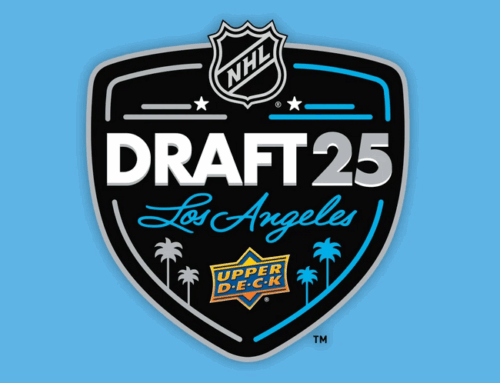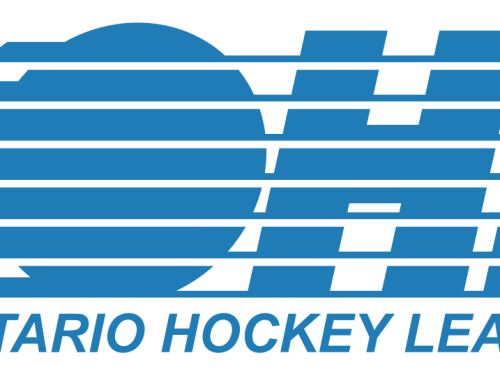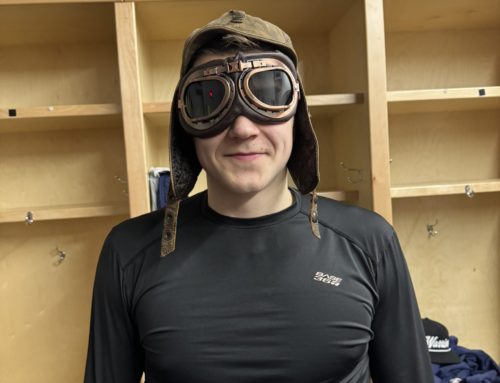Prospect Ramblings – Translating Junior League Scoring to the NHL
Hayden Soboleski
2016-06-12
Taking a look at how point scoring in different Canadian junior leagues translates to NHL scoring in this Sunday's Ramblings…

Firstly – lets get some trade news out of the way. Florida traded the contract of Marc Savard along with a 2nd-round-pick to New Jersey in exchange for Paul Thompson and Graham Black. The draft pick is the biggest piece in this deal, as well as the extra contract slot opened up by the Devils. Florida most importantly stops paying Savard's contract, and also picks up a serviceable career AHLer in Thompson. Black, a former 5th-round-pick, has failed to flourish at the AHL level over three seasons and should not be on anyone's fantasy radar.
***
Alright, so every year there are hotshot top scorers in the OHL, QMJHL, and WHL, but when trying to predict how this translates into future NHL scoring, people usually make the decision based on the player's size rather than knack for finding the net. So I want to take a quick look at some of the top offensive performers in each of these leagues over the last few years, to see if their skill tend to make the jump sooner or later. A nice bonus in this study – we may learn if being prolific in any particular league is more or less encouraging than others.
What I've done is take the top three scorers from each league from the 2010-11 season to the 2013-14 season (I deemed the seasons more recent than this too soon to use since some players naturally take longer to physically develop, regardless of skill level). I've listed the points they totaled that junior campaign, and listed beside that the maximum performance output they have shown in a single NHL year to date. For players still on the fringe of receiving regular NHL action, Ive included a number of games played, but for the obvious NHLers I did not bother.
Let's start with the OHL:
| Player | OHL Points | NHL peak to date | |
|
2010-11
|
Tyler Toffoli | 108 | 58 |
| Jake Akeson | 108 | 1 in 1GP | |
| Ryan Strome | 106 | 50 | |
|
2011-12
|
Michael Sgarbossa | 102 | 1 in 3GP |
| Tyler Toffoli | 100 | 58 | |
| Tanner Pearson | 91 | 36 | |
|
2012-13
|
Vincent Trochek | 109 | 53 |
| Charles Sarault | 108 | Never played | |
| Nick Cousins | 103 | 10 in 36GP | |
|
2013-14
|
Connor Brown | 128 | 6 in 7GP |
| Dane Fox | 107 | Never played | |
| Scott Kosmachuk | 100 | 3 in 8GP |
The contents of this table to me makes sense. The top scorers from the 2010-11 and 2011-12 seasons have made their way to the NHL and given me some good data, while the players from 2012-13 and 2013-14 are starting to do so but not yet with full NHL seasons (for the most part). The top player in this list is probably Toffoli, who is now a very high quality goal scorer. There are also a few duds on the list – Sgarbossa and Akeson seen to have landed in the realm of being call-ups forever, while Sarault and Fox are no longer relevant at all. This is the kind of result I expected when collecting this data. Let's see how this comapres to the next two leagues…
Next, the WHL:
| Player | WHL Points | NHL peak to date | |
|
2010-11
|
Linden Vey | 116 | 15 |
| Tyler Johnson | 115 | 72 | |
| Ryan Nugent-Hopkins | 110 | 56 | |
|
2011-12
|
Brendan Shinnimin | 134 | 1 in 12GP |
| Mark Stone | 123 | 64 | |
| Ty Rattie | 121 | 6 in 13GP | |
|
2012-13
|
Brendan Leipsic | 120 | 3 in 6GP |
| Nic Petan | 120 | 6 in 26GP | |
| Ty Rattie | 110 | 6 in 13GP | |
|
2013-14
|
Mitch Holmberg | 119 | Never played |
| Nic Petan | 113 | 6 in 26GP | |
| Oliver Bjorkstrand | 109 | 8 in 12GP |
Considered the most physical of the three leagues I'm investigating here, this might actually be shown in this data. The biggest standout in this table to me is that almost every player has received at least NHL tryouts. Shinnimin is out of the fantasy hockey picture, but every other player here is likely owned in keeper and prospects fantasy leagues. Not only that, most players are already showing NHL relevance, even the 2012-13 and 2013-14 players (which we didn't see in the OHL list above). Could it be that playing (and succeeding) in the WHL predestines a player to have better luck translating to the big leagues? We can't say based on these numbers alone obviously, but this is a significant finding, regardless of what is causing it. The apparent fact that the top players seem to be ready for NHL action sooner than the players n my OHL list is certainly notable.
Finally, the QMJHL:
| Player | QMJHL Points | NHL peak to date | |
|
2010-11
|
P.M. Devos | 114 | Never played |
| Gabriel Levesque | 107 | Never played | |
| Jonathan Huberdeau | 105 | 59 | |
|
2011-12
|
Yanni Gourde | 121 | 1 in 2GP |
| Zach O'Brien | 101 | Never played | |
| Sebastien Trudeau | 95 | Never played | |
|
2012-13
|
Ben Duffy | 110 | Never played |
| Jonathan Drouin | 105 | 32 | |
| Josh Currie | 104 | Never played | |
|
2013-14
|
Anthony Mantha | 120 | 3 in 10GP |
| Marcus Power | 109 | Never played | |
| Jonathan Drouin | 108 | 32 |
Wow. We basically see the opposite of the WHL here. Only four players on the list will ever be owned in fantasy leagues, while a staggering seven of eleven haven't even received a look in the NHL (and likely never will if you look into the player histories). So opposite to how succeeding in the WHL seems to be favorable in becoming NHL-ready, succeeding in the QMJHL seems to have very little correlation to translating talent to a higher level. Again, could this be related to how many view the QMJHL as the least physical league and most speedy of the three leagues? Regardless of the cause – the effect seems to be there.
Disclaimer – of course there have been superstars and elite players born from all three leagues every year. This does not at all say that one league should be ignored or even shunned in your prospect draft. What we have learned is that being a top scorer in the juniors is by no means a free ride to being a top performer in the NHL down the road. And if we trust the numbers in the tables above, it would seem that being extra-weary of QMJHL top scorers is justified, while putting more clout in top WHL talent is also reasonable. We also could take away from the lists above that the top players in the WHL seem to find their way to the NHL faster than those in the OHL and the QMJHL. I wont tell you how to scout your prospects or what to expect from any particular player based on these findings, but hopefully it is something you keep in mind going forward into your prospect drafts.
***
As always, thank you for reading and best of luck in your summer pools!
Hayden Soboleski
@soboleskih






